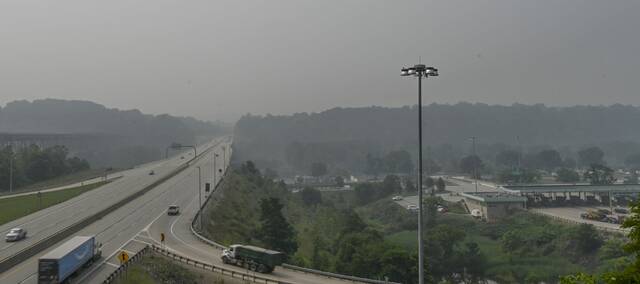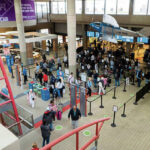If you’re planning to travel during the upcoming Fourth of July holiday, you will be far from alone.
Whether by air or on the road, a record-number of people are expected to be on the move during the long weekend.
The Automobile Association of America is projecting 50.7 million people — 2.1 million (11%) more than last year — will travel over the Independence Day weekend, which would set a record for the holiday.
If the organization’s projections hold true, the number of travelers this year will surpass the record set in 2019, when 49 million people traveled over the holiday.
“Whether you’re traveling by car or flying to your destination, it’s going to be very important to pack your patience,” said Bevi Powell, senior vice president of AAA East Central.
“More and more Americans are making travel a priority, and, in fact, this will be the highest projected holiday for air travel in 20 years,” Powell said.
AAA estimates about 43.2 million people will travel by motor vehicle — 2.4% more than last year and 4% more than 2019. A dip in gas prices since last summer is helping to fuel the decision on how people travel.
The Pennsylvania Turnpike looks to host a large chunk of those drivers.
According to the Turnpike Commission, travelers are expected to exceed last year’s totals by 300,000 vehicles, reaching 5.9 million for the holiday week. Friday is expected to be the busiest day, with 750,000 vehicles.
That was expected to drop to about 510,000 vehicles on Sunday but climb throughout the holiday week, with another 710,000 vehicles expected for July 7, Turnpike officials predict.
The average national price for a gallon of regular gasoline was $4.80 on July 4, 2022. In the past several months, the average price for gas has been between $3.50 and $3.60 a gallon because of lower oil costs.
NRIX, which provides transportation data nationally, projected Friday as the busiest day on the roads, with average travel times up nearly 30% above normal.
No matter which day you travel, the organization recommends leaving early in the morning or after 6 p.m. to avoid the heaviest congestion.
AAA also estimates 4.17 million Americans will fly to their destination — 11.2% more than last year and 6.6% more than in 2019.
The biggest issue air travelers faced last summer was the surge in flight cancellations and delays caused by staffing shortages.
Industry officials say flight cancellations trended lower throughout spring 2023 than last year, when 52,000 flights were canceled from June through August, according to data from the Federal Aviation Administration.
Airlines have hired about 30,000 workers since then, including thousands of pilots, and they are using bigger planes to reduce flights but not the number of seats. Authorities say there still are lingering staffing shortages, notably among key air traffic controllers.
The FAA is training about 3,000 more controllers, but they won’t be ready for this summer’s travel.
To help ease the crunch, the agency has asked airlines to reduce flights in the New York City area this summer, which opened 169 new flight paths over the East Coast to reduce bottlenecks.
About 3.36 million people — 24% more than last year — are predicted to travel by bus or train during the holiday, according to AAA.
In 2019, 3.54 million travelers used buses and trains during the Fourth, which set a record.

















